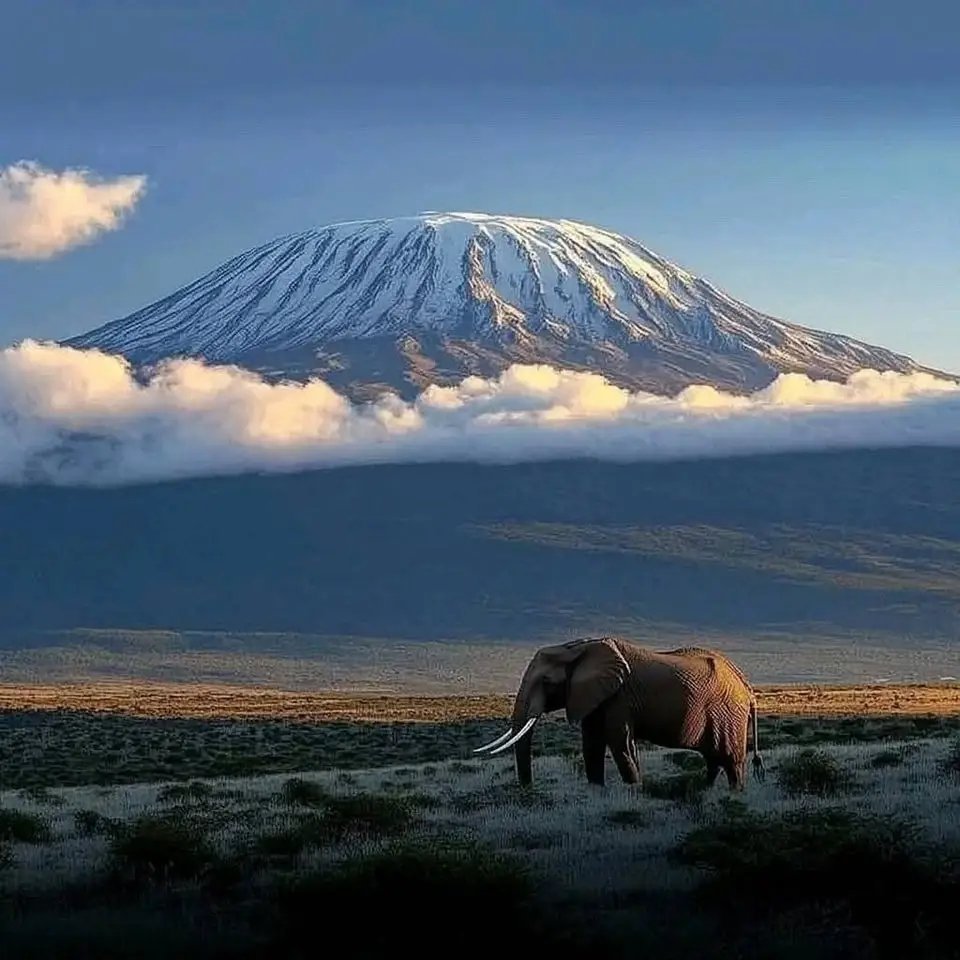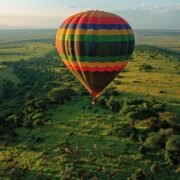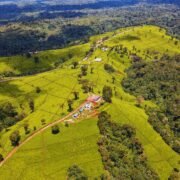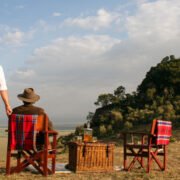
Big 5 Safari in Kenya – The Ultimate Guide to Spotting Africa’s Majestic Icons
Introduction: The Allure of the Big 5 Safari in Kenya
There’s something undeniably magical about encountering Africa’s Big Five in the wild. The phrase itself evokes images of power, mystery, and adventure—of roaring lions, towering elephants, elusive leopards, massive buffalo, and armored rhinos. Kenya, blessed with rich biodiversity and vast protected landscapes, offers one of the best opportunities in Africa to witness all five icons of the African wild in their natural habitat.
A Big 5 Safari in Kenya isn’t just a checklist of animal sightings—it’s a deep dive into the soul of the continent, a thrilling expedition across legendary parks and remote conservancies, and an immersion in local cultures that have coexisted with wildlife for generations. Whether you are planning your first safari or returning for another taste of the wild, this guide gives you everything you need to make your Big 5 safari unforgettable.
What Are the Big Five—and Why Are They So Special?
The term “Big Five” originally came from colonial-era big-game hunters who named the lion, leopard, elephant, rhinoceros, and Cape buffalo as the most dangerous animals to hunt on foot. Today, the term has evolved to represent the most celebrated and sought-after animals for wildlife viewing and photography on African safaris.
Let’s break them down:
-
Lion: The undisputed king of the African savannah, lions symbolize strength, leadership, and family. In Kenya, you’ll see them lounging under acacia trees, nursing cubs, or hunting in coalitions.
-
Leopard: Stealthy, solitary, and supremely elusive, leopards are the most difficult Big Five member to spot. They prefer wooded habitats and often rest in trees during the day.
-
African Elephant: The largest land mammal on Earth, elephants inspire awe with their sheer size and intelligence. Amboseli’s herds, with Mount Kilimanjaro in the background, are particularly iconic.
-
Rhinoceros: Both black and white rhinos can be seen in Kenya, especially in protected conservancies. Poaching has made them rare and highly protected.
-
Cape Buffalo: Often underestimated, buffalo are unpredictable and can be very aggressive when threatened. Their massive herds make for impressive sightings, especially near rivers and swamps.
Seeing all five on a single safari requires planning, knowledge of Kenya’s geography, and a bit of luck—but with Stawi Adventures, you’re in the best hands to achieve this.
Top Destinations in Kenya to See the Big Five
1. Maasai Mara National Reserve
The Maasai Mara is a bucket-list destination for good reason. As the northern extension of the Serengeti ecosystem, the Mara offers year-round game viewing and one of the highest lion densities in Africa. During the Great Migration (July to October), over 1.5 million wildebeest, zebras, and gazelles flood the plains, attracting predators in dramatic numbers.
What to expect:
-
Excellent chances of spotting all Big Five
-
River crossings, big cat action, and photographic moments galore
-
Cultural encounters with the Maasai community
Related Tours:
-
7-Day Kenya Bush Luxury Safari – The Ultimate Big Five Experience
-
5-Day Classic Big 5 Safari in Kenya: Maasai Mara, Lake Nakuru & Lake Naivasha
2. Amboseli National Park
Famous for its postcard-perfect scenes of elephants in front of Mount Kilimanjaro, Amboseli is the best place in Kenya to see large elephant herds, many with impressive tusks. You may also see lions and the occasional leopard or cheetah.
Why visit:
-
Elephant behavior and family dynamics up close
-
Beautiful landscapes and year-round wildlife
-
Proximity to Nairobi and fly-in accessibility
Explore:
3. Ol Pejeta Conservancy (Laikipia Region)
Ol Pejeta is not only a conservation success story—it’s a Big Five haven. The conservancy is home to the last two northern white rhinos on Earth and a sanctuary for rescued chimpanzees. Wildlife densities are excellent and predator sightings frequent.
Highlights:
-
Track rhinos with rangers
-
Visit the Sweetwaters Chimpanzee Sanctuary
-
Combine with Samburu or Aberdares for contrast
Tour Option:
4. Laikipia Conservancies
Laikipia is for the sophisticated safari-goer. With fewer crowds and private conservancy experiences, it’s ideal for those seeking luxury, conservation, and exclusivity. Lodges here are some of the best in Africa.
Top conservancies:
-
Lewa Wildlife Conservancy (UNESCO World Heritage Site)
-
Borana Conservancy
-
Ol Lentille and Loisaba for luxury and remoteness
Discover More:
5. Tsavo East & Tsavo West National Parks
Covering over 20,000 square kilometers, Tsavo is Kenya’s largest park and offers remote wilderness, massive herds of red elephants (colored by the park’s iron-rich soil), and dramatic landscapes including lava fields and Mzima Springs.
Why Tsavo?:
-
Off-the-beaten-path safaris
-
Diverse ecosystems and birdlife
-
Great for returning safari travelers
Tour to Consider:
When is the Best Time for a Big Five Safari in Kenya?
Kenya’s wildlife is spectacular year-round, but certain months provide peak experiences:
-
January to March: Dry season. Fewer tourists and easier animal spotting.
-
June to October: Prime season with the Great Migration, cooler weather, and excellent visibility.
-
November & April-May: Green seasons with lower rates and fewer crowds, though roads can be muddy.
For Big 5 sightings, the dry seasons are the most rewarding, especially in Maasai Mara, Laikipia, and Tsavo.
Safari Styles for Big 5 Seekers
Fly-in Safaris
Save time and enjoy aerial views of Kenya’s diverse landscapes. Perfect for remote camps in Laikipia, Mara, and Samburu.
Learn more: Flying Safaris in Kenya
Private Safaris
Enjoy personalized experiences with your own guide and vehicle. Ideal for couples, families, and honeymooners.
Explore: Private Safari Packages
Luxury Lodge Safaris
Stay in award-winning camps with exceptional service, bush spas, and star beds.
See: Luxury Safari Holidays in Kenya
Solo Safaris
Kenya is solo-friendly with shared game drives, communal dining, and guided experiences.
Get tips: Solo Safari in Kenya – Freedom, Solitude, and Safety
What to Pack for a Big 5 Safari in Kenya
-
Neutral-colored clothing (greens, browns, khakis)
-
Sunhat, sunglasses, and sunscreen
-
Binoculars and camera with zoom lens
-
Light fleece for early morning drives
-
Travel adapter, flashlight, personal meds
-
Reusable water bottle and insect repellent
Beyond Wildlife: Cultural and Conservation Encounters
A safari in Kenya is more than animal sightings. Engage with the Maasai and Samburu communities, learn about local conservation efforts, and support eco-tourism by staying in community-run camps.
Many of our partner lodges fund schools, healthcare, and conservation programs. When you travel with Stawi Adventures, your safari dollars support wildlife protection and sustainable development.
Top Questions Travelers Ask About Big 5 Safaris in Kenya
1. Can I see all Big Five in one park?
It’s possible in the Maasai Mara and Ol Pejeta, but spreading your safari across multiple destinations improves your odds.
2. Are children allowed on Big 5 safaris?
Yes. Many lodges are family-friendly and offer special programs for children.
3. How safe are safaris?
Very safe when conducted with certified guides. Kenya’s parks are well-regulated.
4. How many days should I plan for?
At least 6–8 days is ideal to maximize your chances of seeing all five species and to enjoy more than one ecosystem.
Book Your Big Five Safari in Kenya Today
Stawi Adventures specializes in crafting bespoke safari experiences across Kenya’s top Big 5 destinations. Whether you want a romantic private escape, a luxury fly-in safari, or an adventurous overland tour—we’ll customize every detail.
Top Big 5 Itineraries to Book Now:
Conclusion: Witness the Wild With Stawi Adventures
A Big 5 Safari in Kenya is more than a trip—it’s a once-in-a-lifetime experience that connects you with nature, culture, and the timeless rhythm of the wild. Let Stawi Adventures be your guide to the extraordinary.
Start planning today. Visit stawiadventures.com/tours to explore our full range of curated safari packages.






